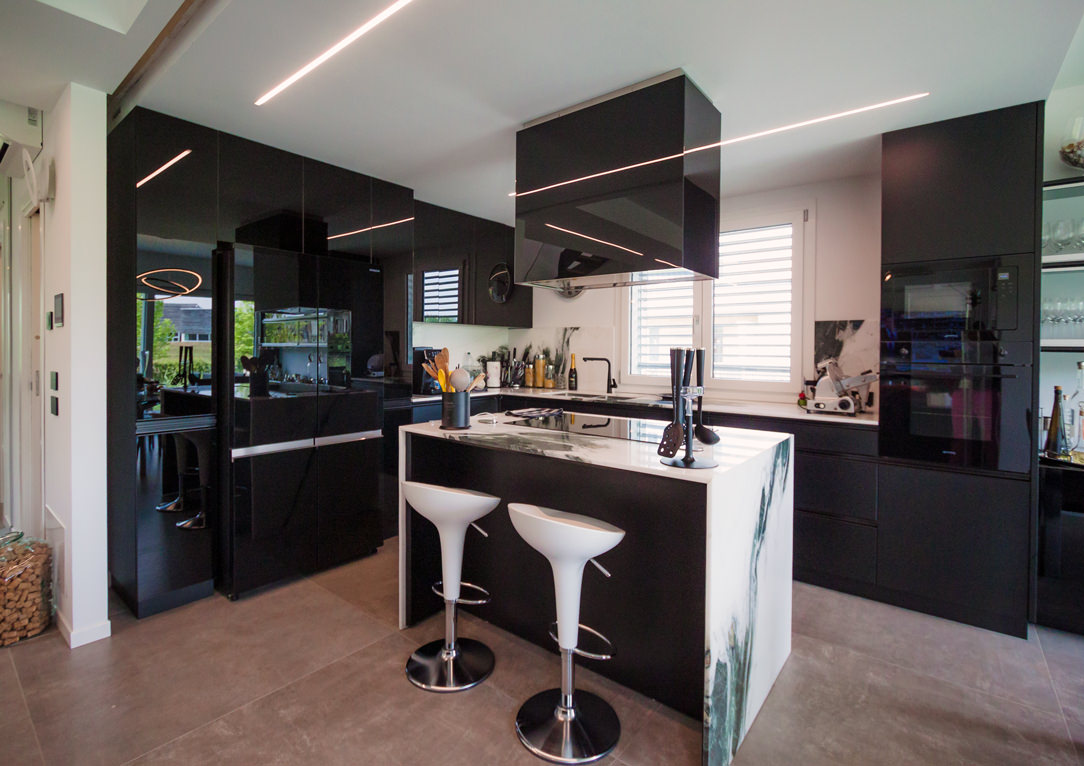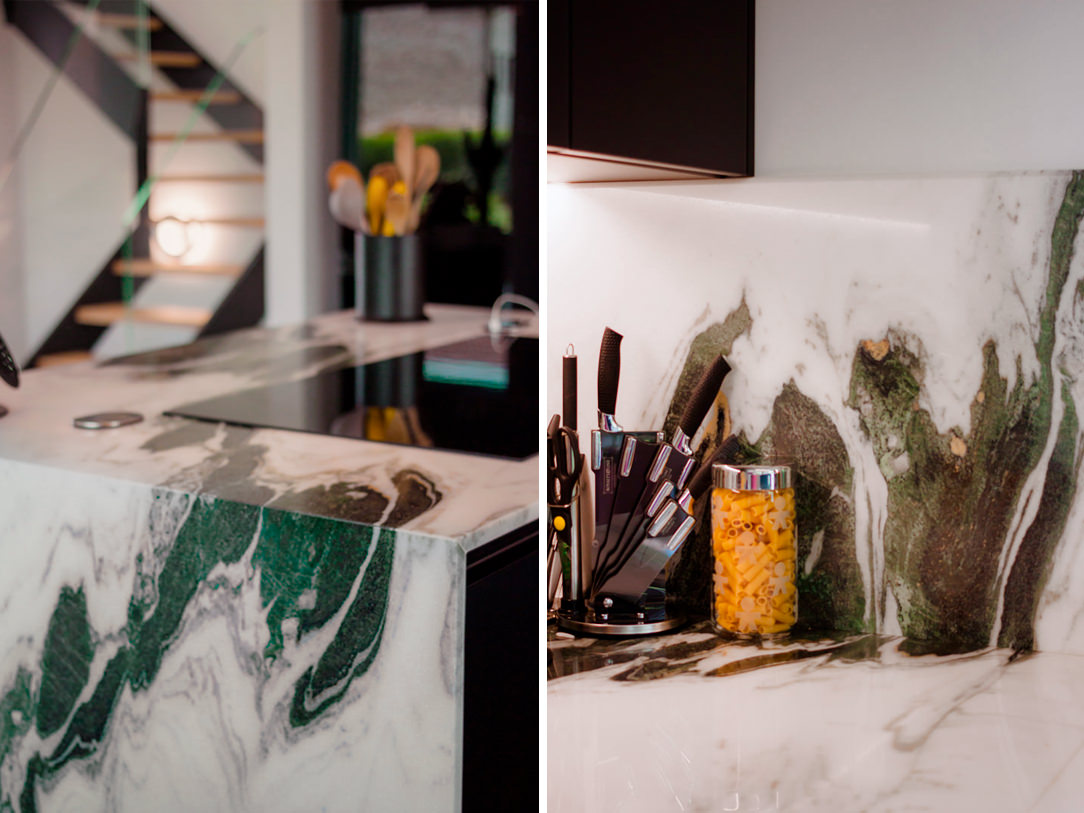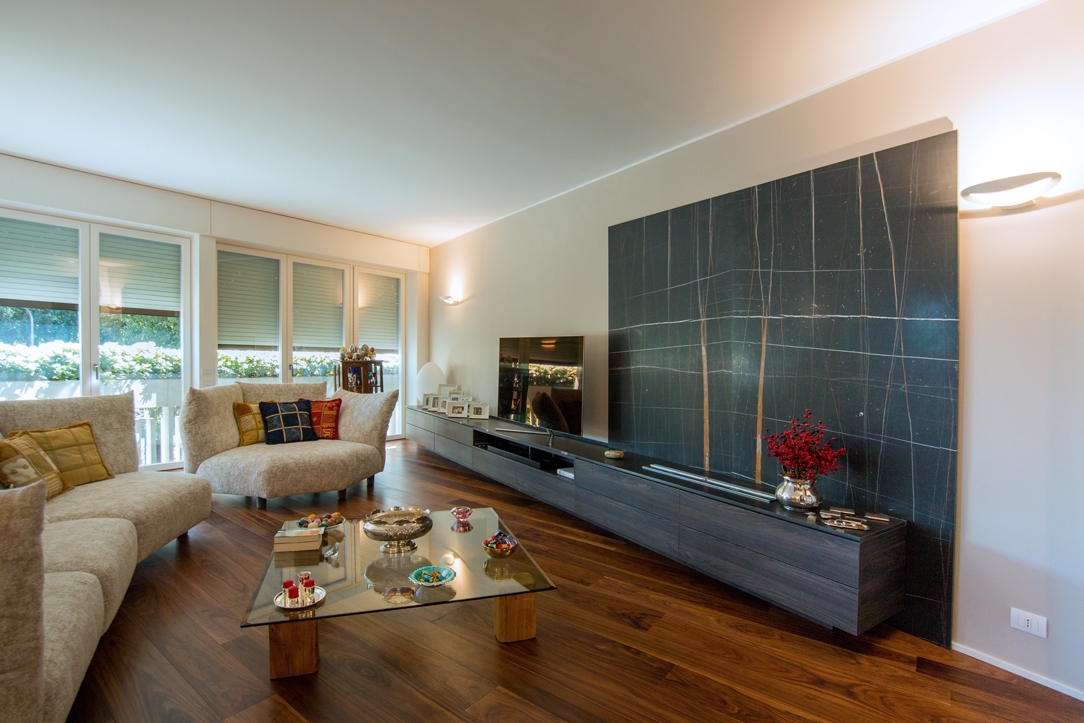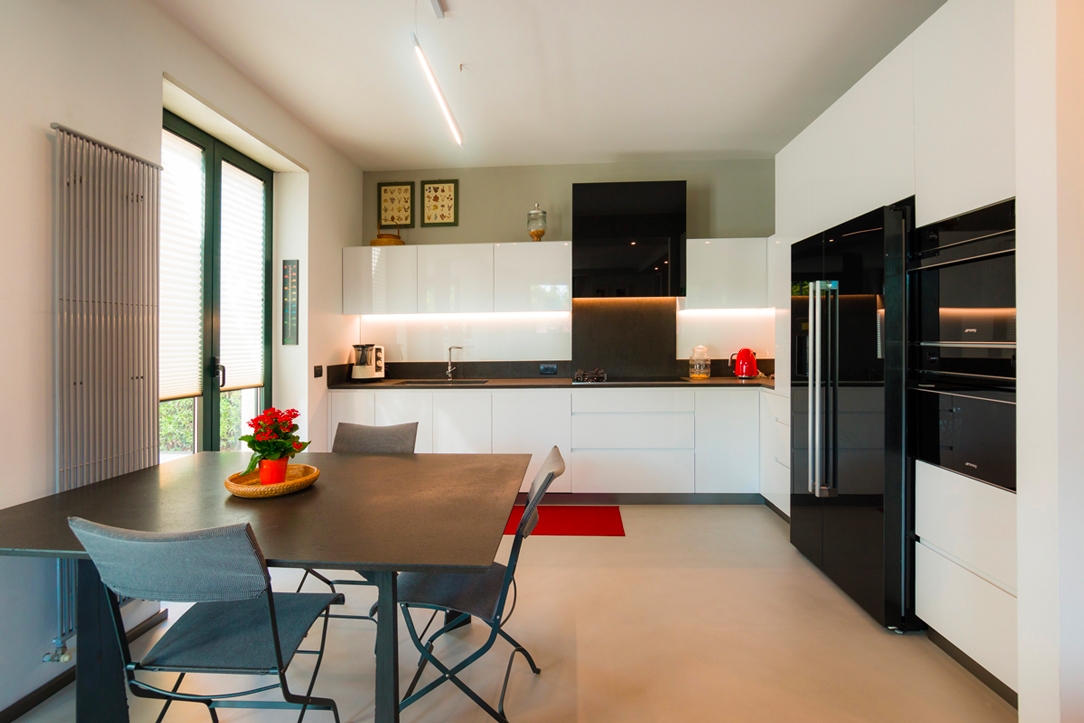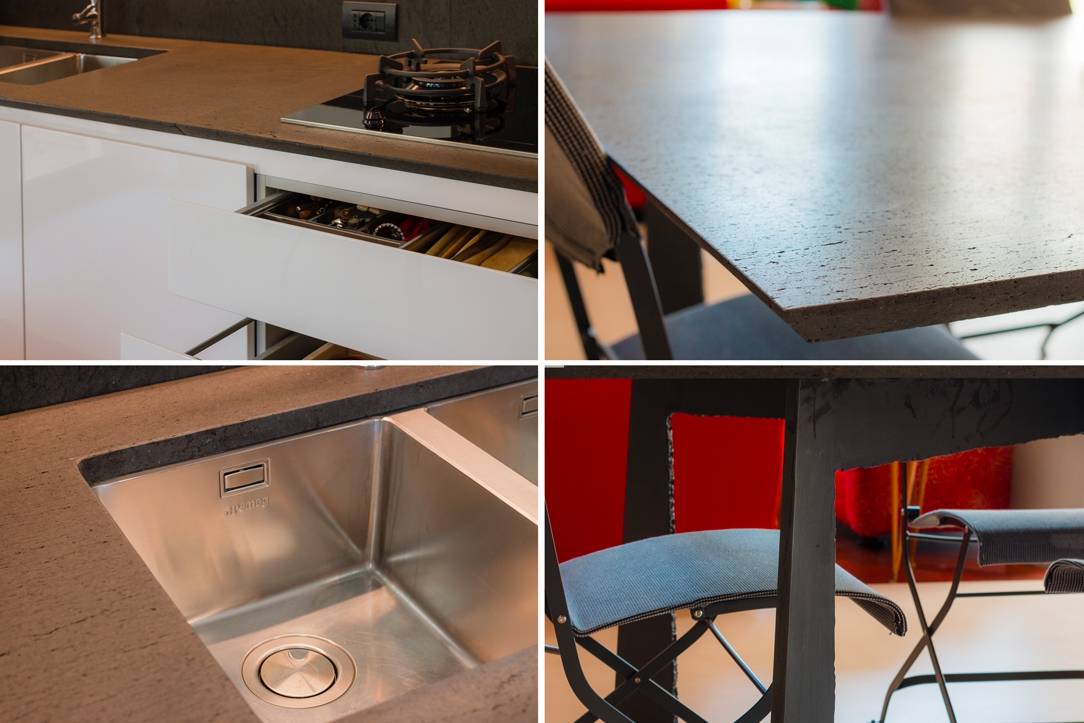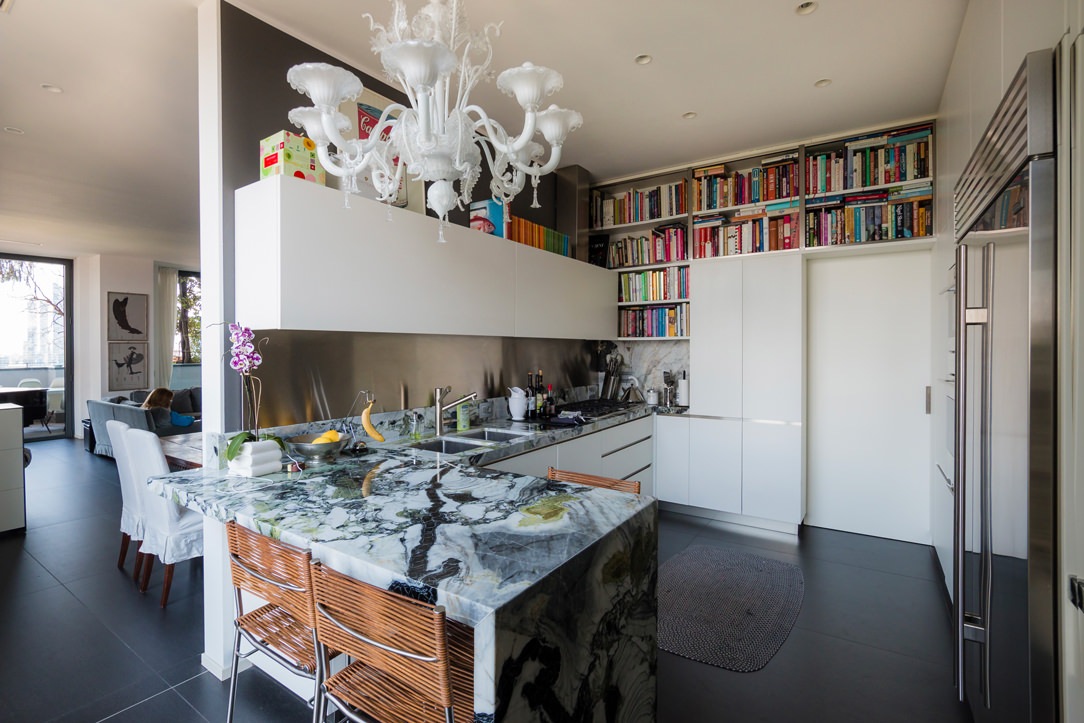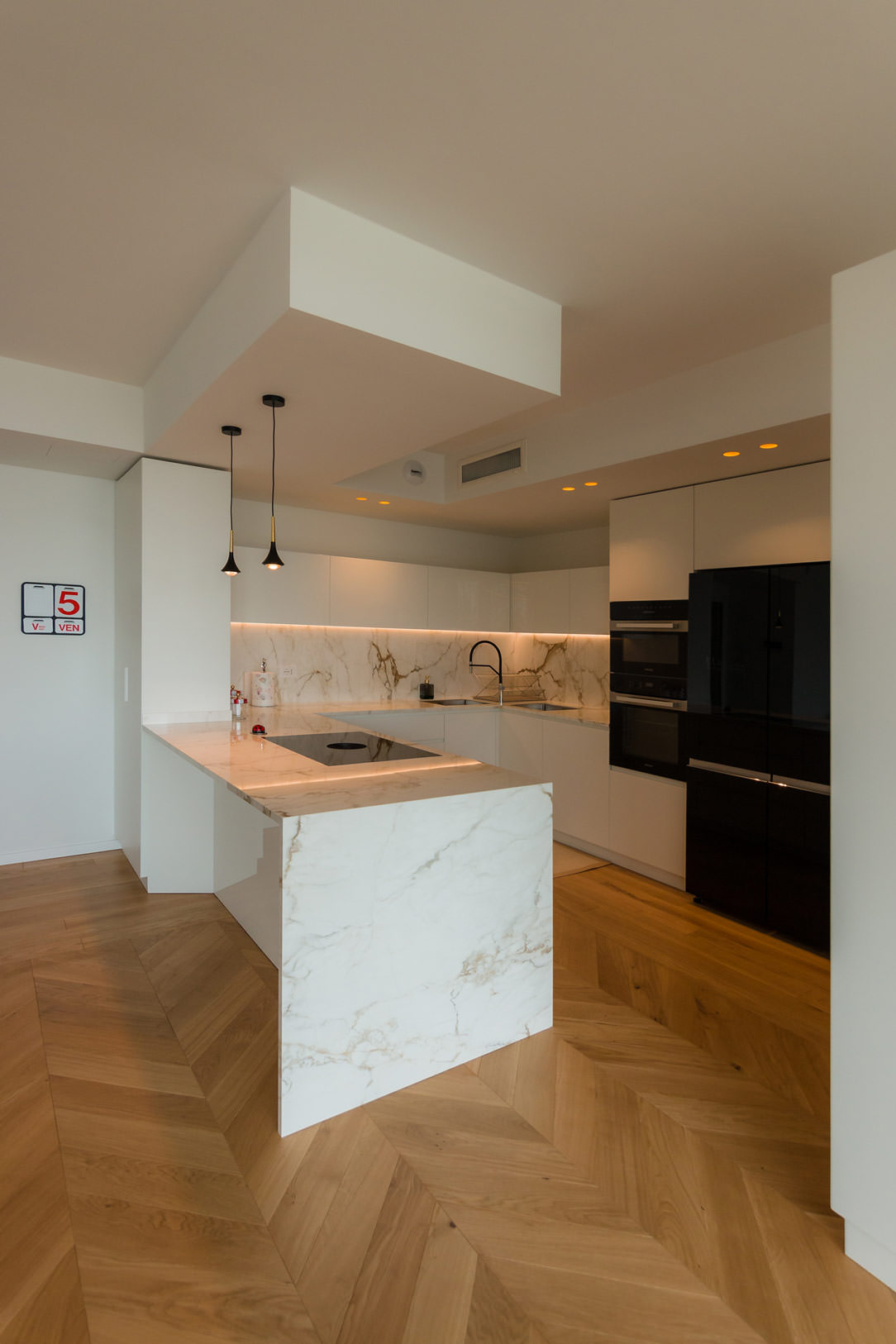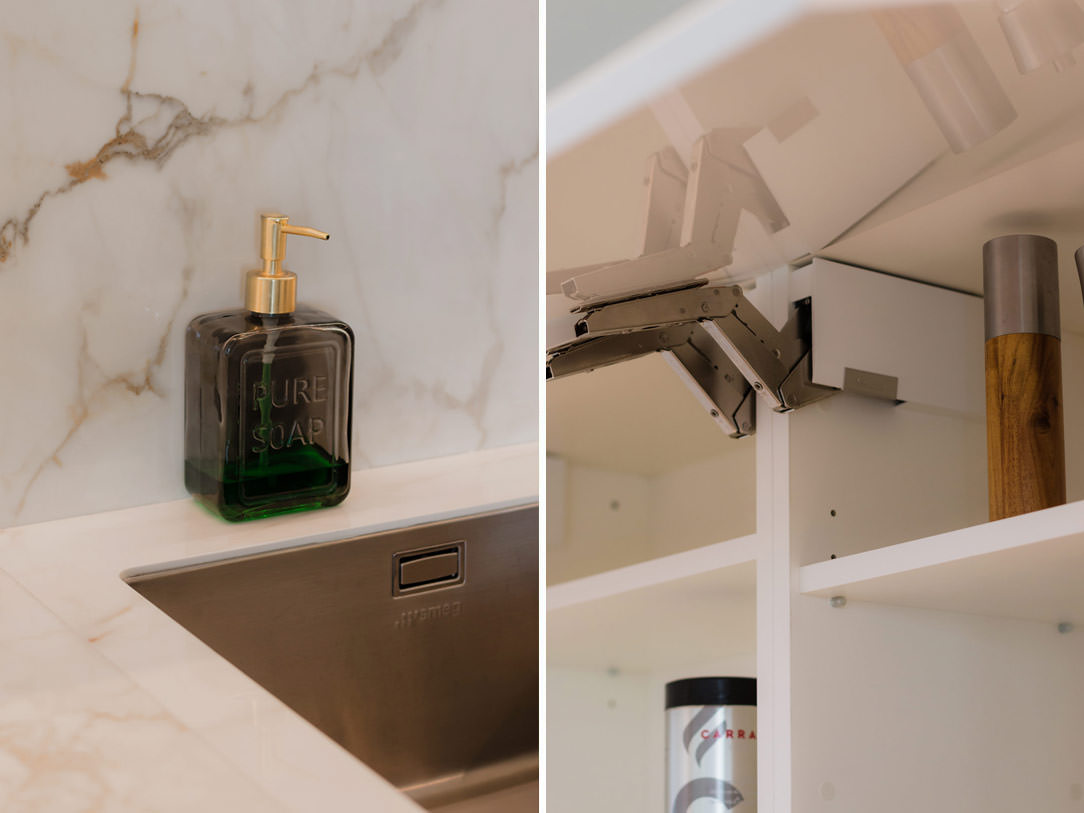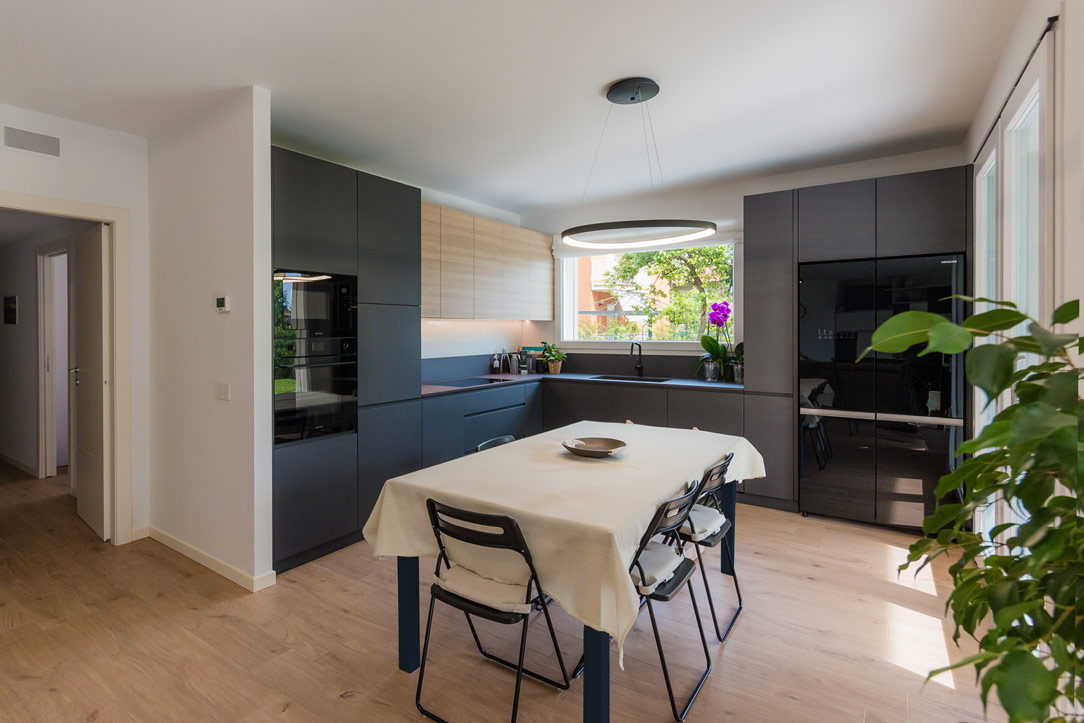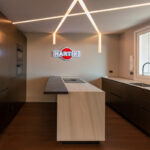Kitchen countertops: the materials available on the market offer a wide range of possibilities, each with unique characteristics. That’s why choosing the right kitchen worktop can often be a challenging decision. From solid wood, laminates, and HPL to stainless steel, quartz, granite, marble, and the latest ceramic materials, the options are nearly endless. In this article, we will focus on two highly popular categories: marble, natural stones, and quartz, alongside ceramic materials, exploring their features, advantages, and limitations.
Natural Materials: Marble and Stones
Marble
Marble is undoubtedly one of the most elegant and prestigious materials for a kitchen countertop. Its beauty lies in the uniqueness of each slab: no two are alike, thanks to the veins, striations, and unique transparencies that add depth and a three-dimensional quality to the surface. These details often result from natural elements crystallized over thousands of years. A perfect example is Panda White marble, with its golden veins standing out against a dark background, ideal for bringing brightness to a modern kitchen design.
Marble slabs are typically available in thicknesses of 1.2, 2, or 3 cm. Their use can involve arrangements in “book-matched” patterns, creating a mirrored effect that is particularly striking when used on walls. Alternatively, the veins can be aligned to follow the functional surface of the countertop, emphasizing the material’s natural beauty.
The cutting process must be carefully planned to ensure that openings for sinks or cooktops do not compromise the most striking parts of the slab.
In recent years, dark or heavily veined marble has gained significant popularity. A notable example is polished Negresco marble, which pairs beautifully with metallic kitchens, creating an effect of unparalleled elegance.
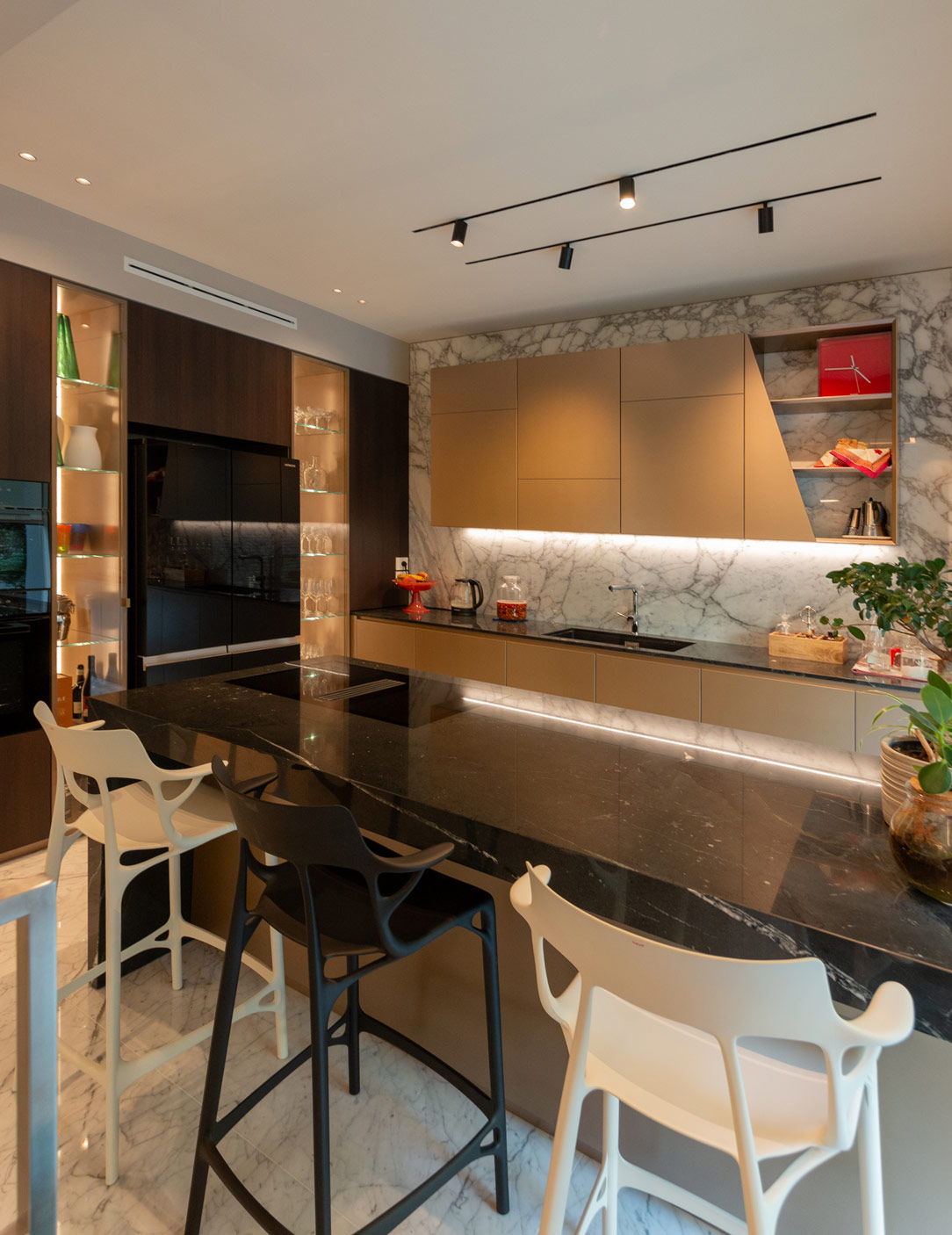
Maintenance of Natural Materials
Marble and natural stones require careful maintenance. Their porosity makes them vulnerable to staining from acidic substances such as tomato, lemon, or wine. To preserve their beauty, it is essential to use neutral cleaning products and regularly treat the surface with appropriate sealants or protective treatments.
A Place to Admire Them in Person
Marmomac, held annually in Verona (considered the second home of marble after Carrara), is the premier event for marble and natural stone enthusiasts. This exhibition showcases unique slabs from around the world, offering a chance to explore the diversity and beauty of these materials. Below is an example of Travertine and green Amazonite.
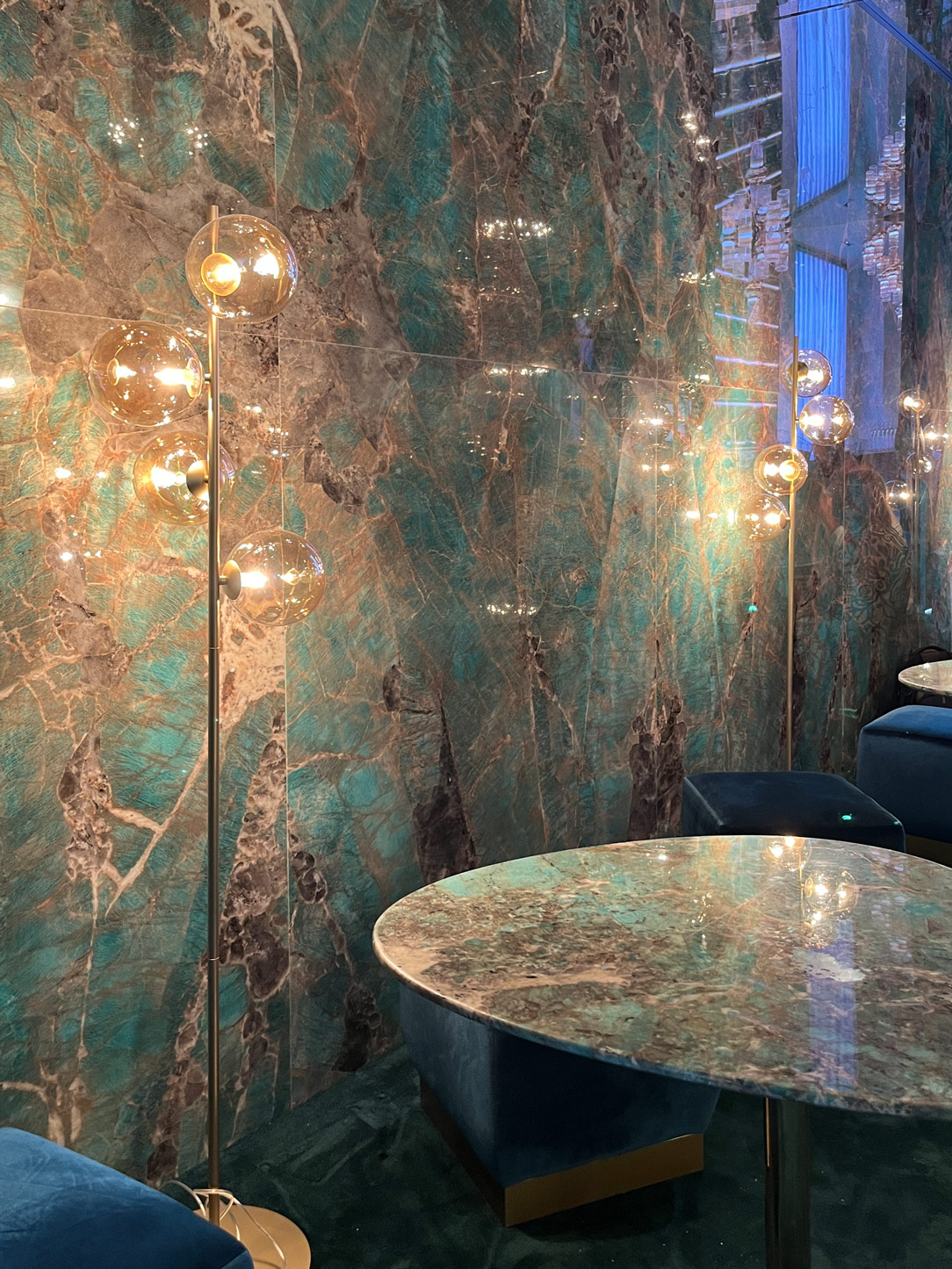
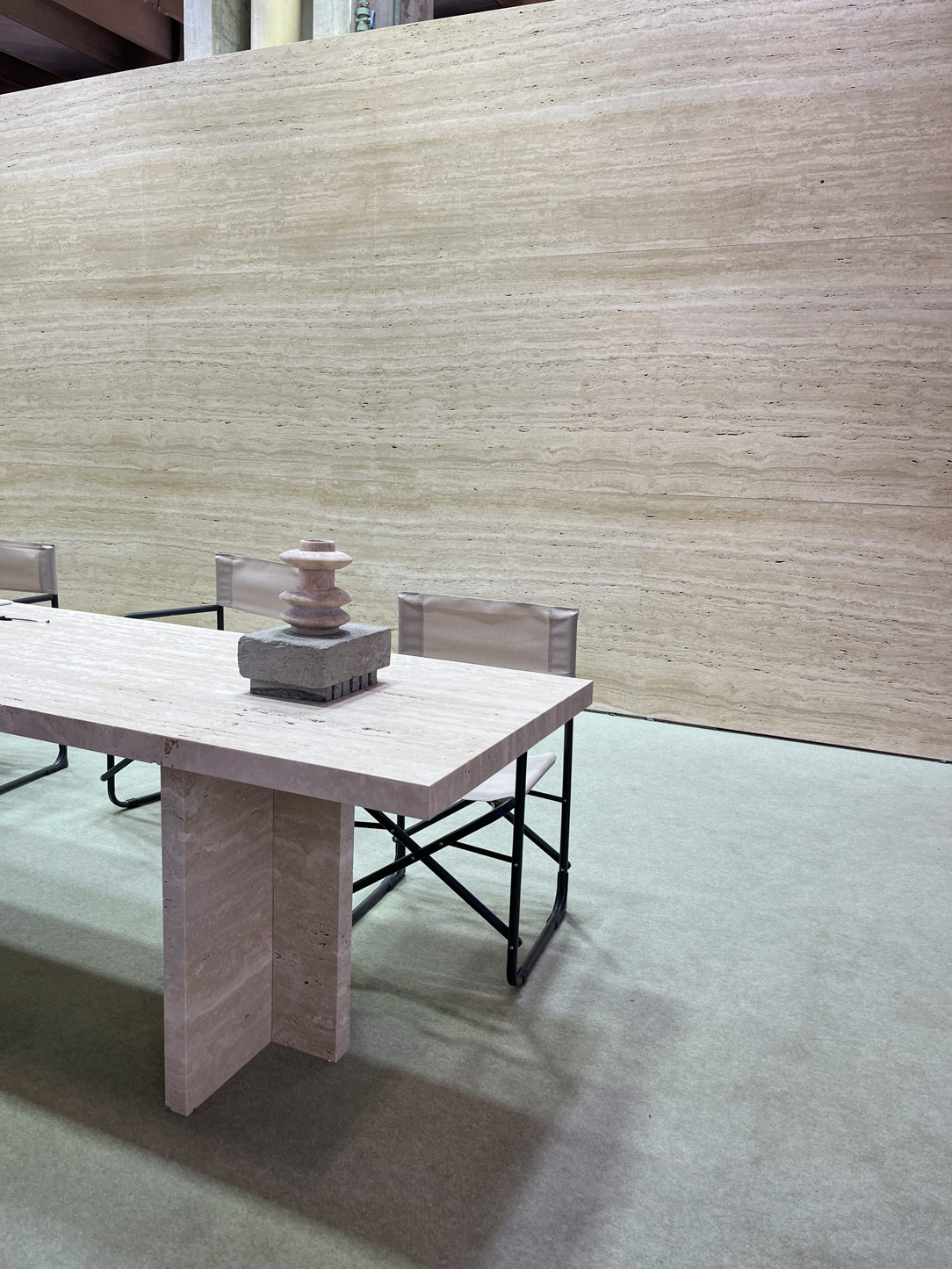
Ceramic Materials and Quartz Agglomerates: Innovation and Practicality
Quartz Agglomerates
Quartz agglomerates are among the most versatile and sought-after options for kitchen countertops. Composed of approximately 95% natural quartz and 5% resins, this material combines the aesthetics of natural stones with the performance of technical materials. Its surface is completely smooth and non-porous, making these countertops particularly hygienic and resistant to liquid absorption and staining.
Thanks to quartz’s high hardness, these surfaces offer exceptional resistance to abrasion and scratches, making them ideal for everyday kitchen use. In recent years, quartz agglomerates have regained popularity due to their dynamic finishes, such as the “terrazzo finish,” which mimics the effect of small stones embedded in a neutral base for a fresh, contemporary look. Below are some examples from Stone Italiana’s collection.
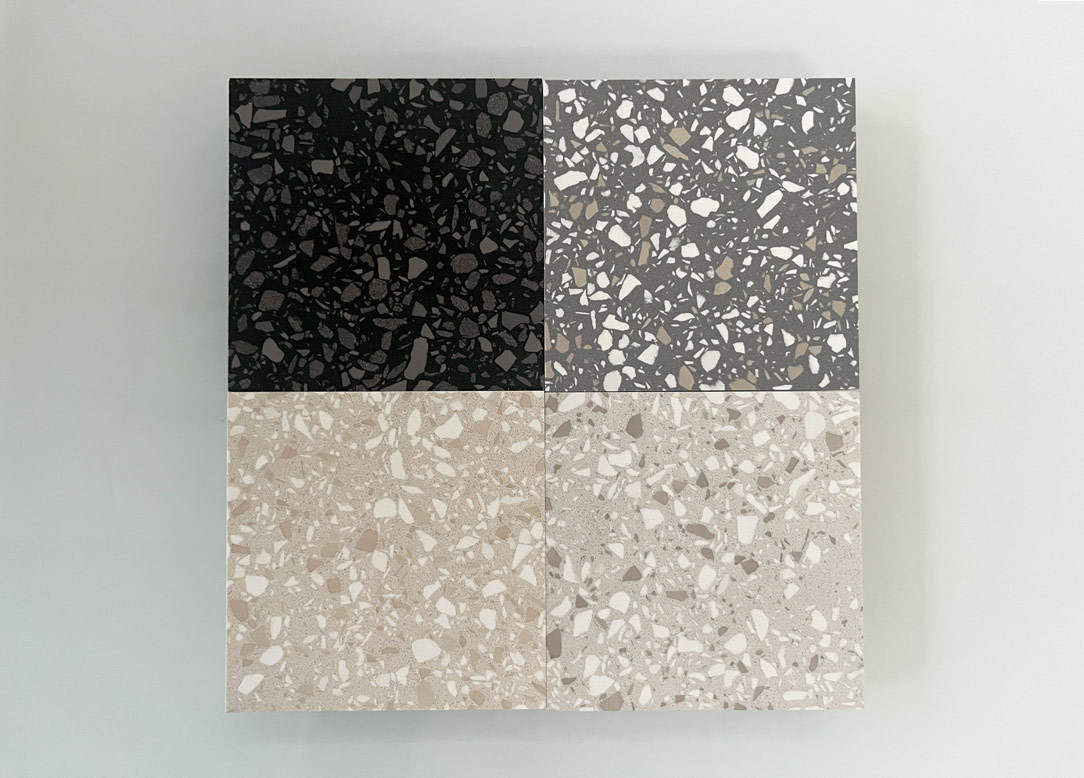
Maintenance of Quartz Agglomerates
Despite their excellent performance, quartz agglomerates can be sensitive to high temperatures. Direct contact with hot pots or pans just off the stove may cause stains or cracks due to resin overheating. To protect the surface, it’s advisable to use trivets or other precautions.
Maintaining quartz countertops is straightforward, requiring only neutral cleaning products. Their non-porous surface makes cleaning easy and prevents bacterial buildup, ensuring a highly hygienic kitchen environment.
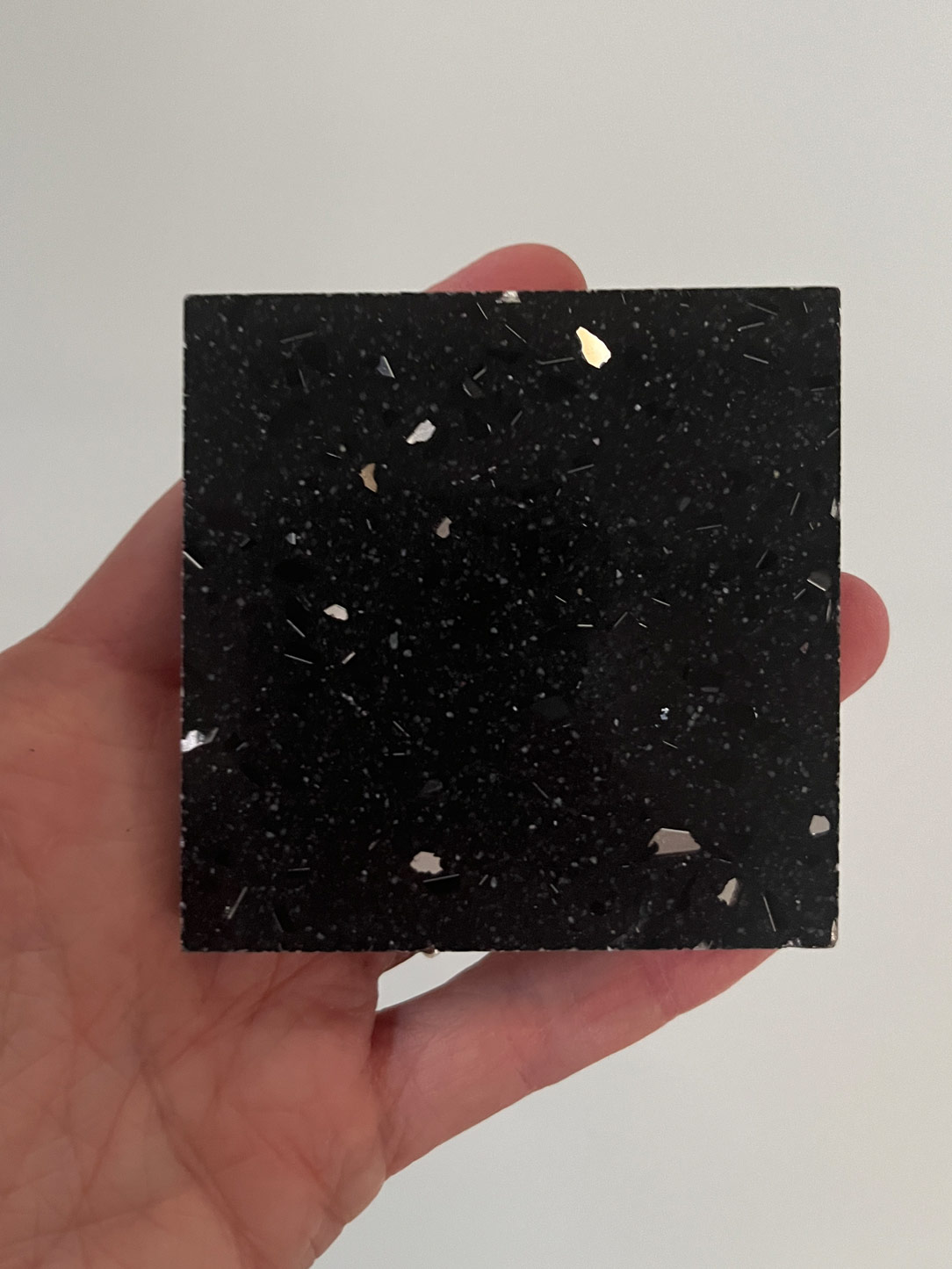
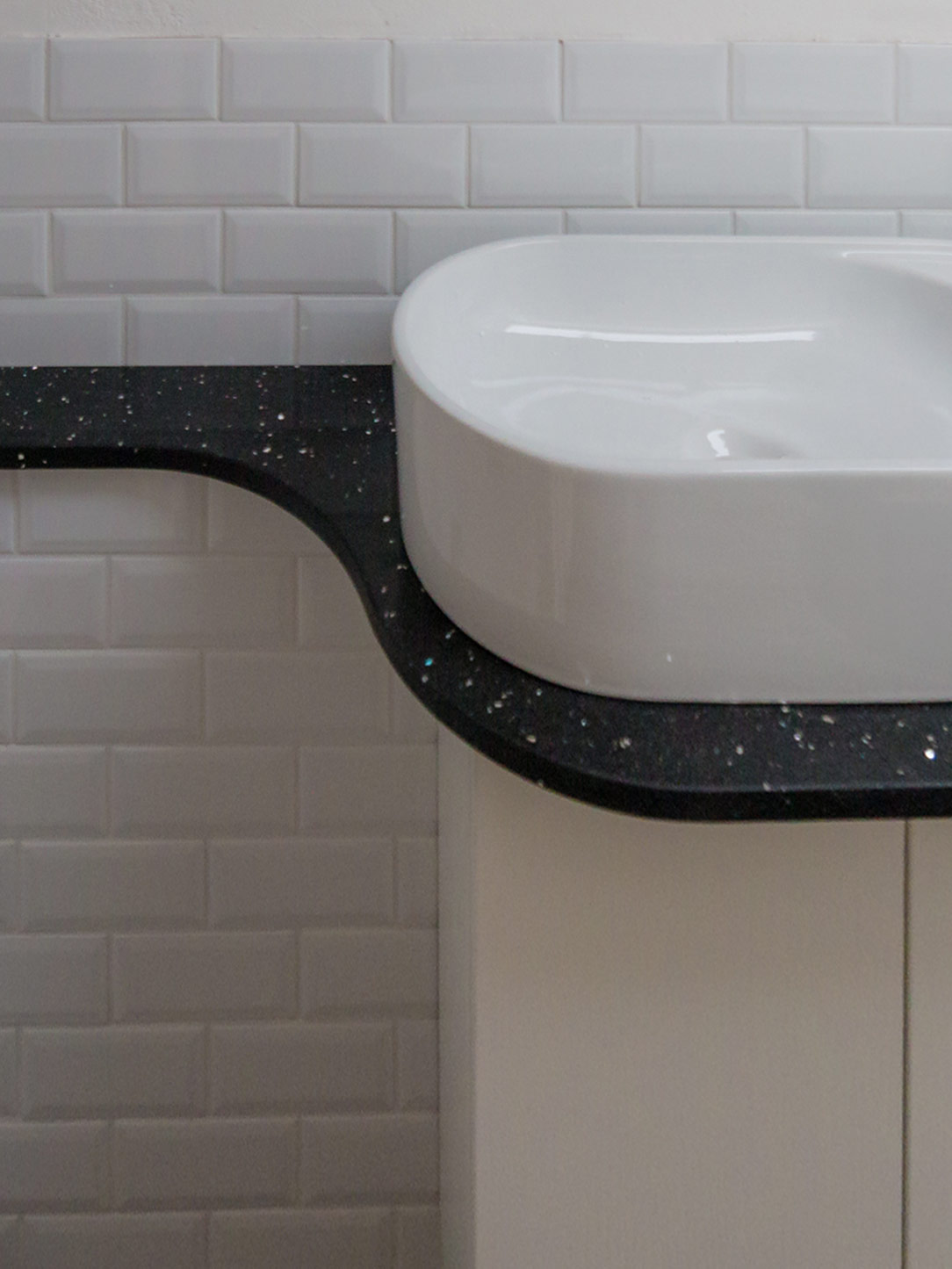
Ceramic Materials
Ceramic materials represent a modern and highly functional solution for kitchen countertops. Made from a blend of mineral powders, glass, ceramics, and quartz, these materials are compacted and baked at high temperatures, ensuring exceptional durability.
These materials are available in neutral textures or with finishes that mimic marble, wood, concrete, and even oxidized metal. Continuous research has led to highly realistic effects, such as marble veins or metal oxidation, making these products highly sought after for elegant and contemporary kitchens.
Dekton from the Cosentino group, is one of the most appreciated ceramic materials, not only for its aesthetics but also for the brand’s eco-sustainability efforts, aiming for carbon neutrality by 2030. Other brands like Neolith and Atlas offer top-quality solutions, while Lapitec, a compound made entirely of mineral stones and free from silicones, stands out for its innovation with Lapitec Chef, an induction cooktop integrated directly beneath the countertop.
One technical aspect to consider is the veining: in ceramic materials, the veins are not continuous through the entire thickness but are limited to the top surface. To address this, 45° joints are often used to create visual continuity along the edges.
The only ceramic material currently offering a true-through vein effect is Silestone, an agglomerate of quartz and crystalline silica.
Maintenance of Ceramic Materials
Ceramic materials are virtually indestructible. These materials are characterized by high resistance to scratches and stains, thanks to their low porosity and the absence of resins. They are highly resistant to thermal shock and, most notably, to heat, making them capable of withstanding contact with pots and pans just removed from the stove. Additionally, they are antibacterial, preventing the formation of germs and microbes. They are also extremely resistant to chemical agents and UV rays, which can often cause color alterations in materials over time.
Where to Discover Ceramic Materials
Cersaie in Bologna, held annually in September, is the international exhibition for ceramic tiles and architecture. It is the perfect place to discover the latest trends and most innovative solutions in the sector. Below, you can see a ceramic version of the popular marble from last year, created by Atlas. The texture definition is highly realistic, but the main difference is noticeable in the transparency. On the left, an original Patagonia slab by Antolini, backlit to emphasize its beauty, while on the right, Atlas’ reproduction, Gala Marvel, captures the high-resolution photograph of a Patagonia slab with remarkable detail.
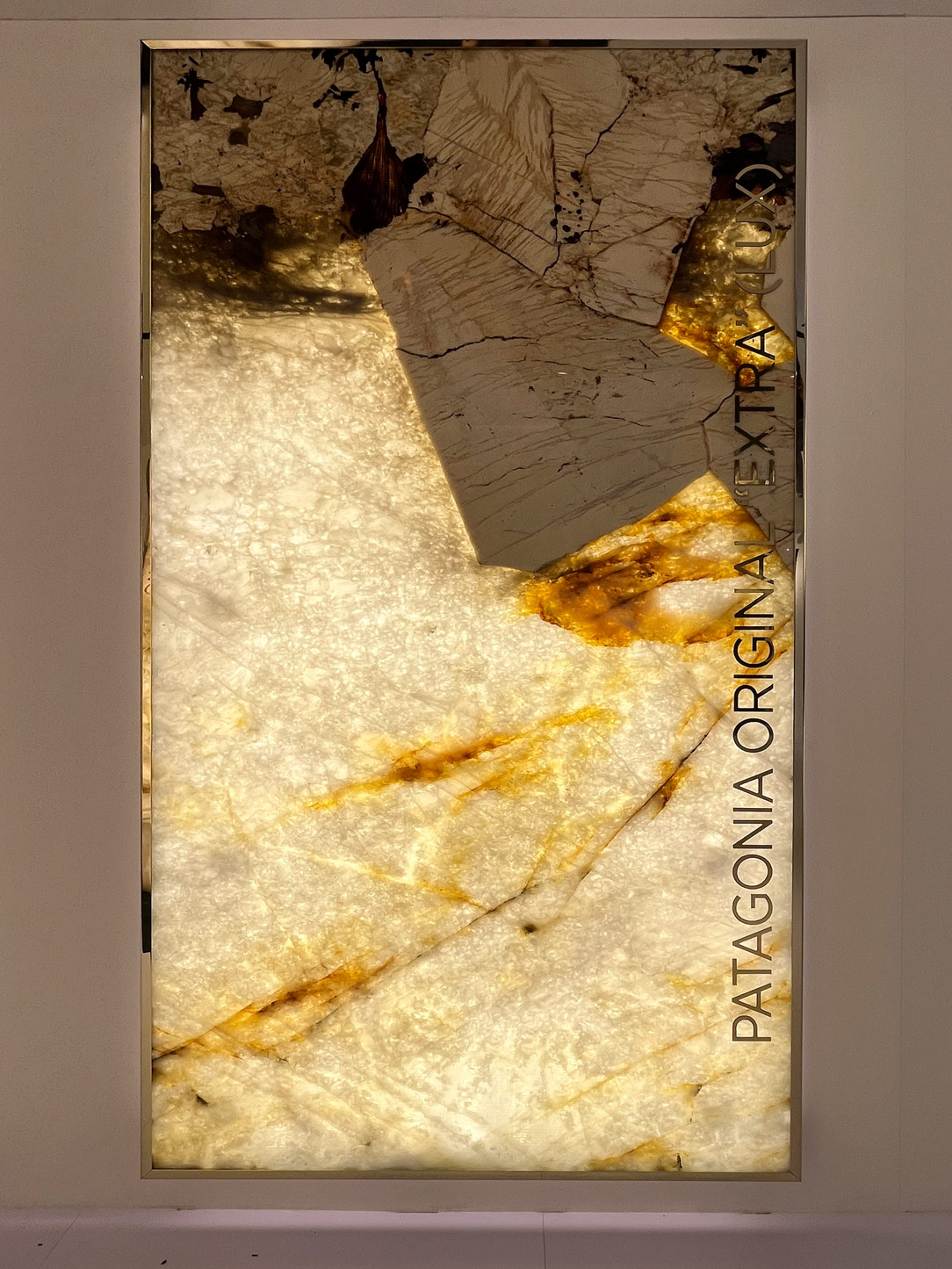
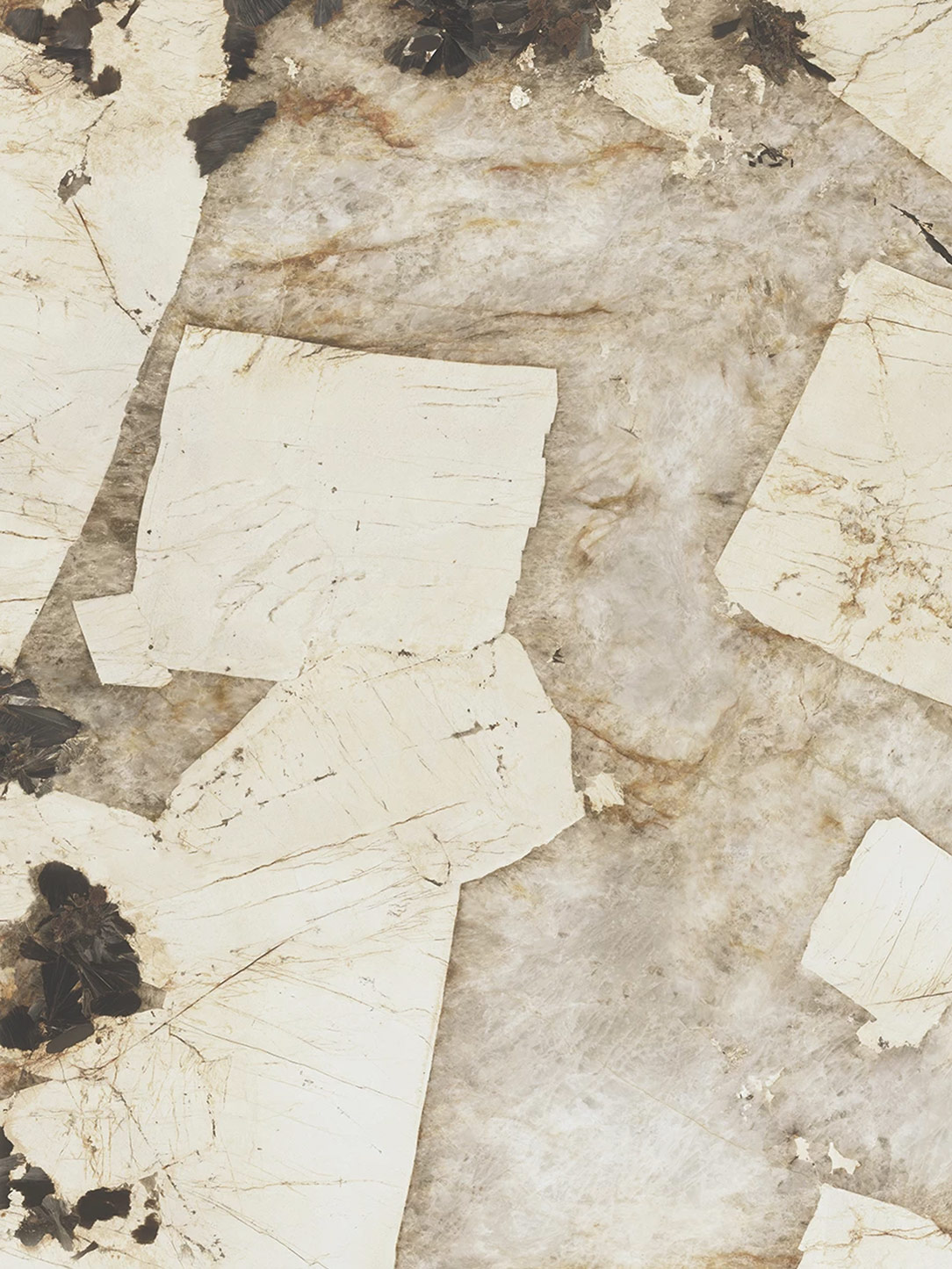
Conclusion
The choice between natural materials and ceramic materials depends on personal needs and the desired style for the kitchen. Marble and natural stones offer a unique and timeless charm, thanks to their authenticity and irreplaceable beauty, but they require more careful maintenance in daily use. Ceramic materials, on the other hand, represent a modern and highly functional solution, offering durability and practicality without sacrificing elegance. With their realistic finishes and a wide range of textures available, they fit into any context, from contemporary designs to more traditional ones.

